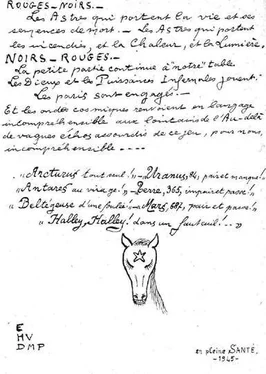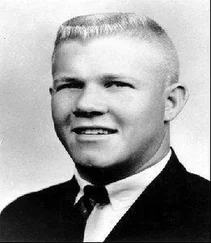While the Allies marched up the Italian peninsula, seizing Rome and Mussolini, anxious and hopeful Parisians speculated about the long-expected Allied attack on Occupied Europe. Winston Churchill would call this undertaking “the most difficult and complicated operation that has ever taken place.” On the early morning of June 6, at 0630, H-hour of D-Day, or J-Jour to the French, the massive Allied armada of some 175,000 troops, 11,000 planes, and more than 5,000 vessels swarmed over the rough English Channel in what would be the largest seaborne invasion in history.
One week and thousands of casualties later, as the Allies fought through the bocage of Normandy, with its thick hedges and sunken lanes protected by three elite SS Panzer divisions, Adolf Hitler unleashed a new “wonder” weapon: the long-range, pilotless, and jet-powered V-1 flying bomb, to wreak vengeance on the city of London. Carrying a one-ton warhead and moving at a speed of 700 km an hour, which was faster than any Allied plane or anti-aircraft gun, the V-1 “Hell Hound” or “Fire Dragon” would, by end of summer, kill 6,184 people and destroy 75,000 buildings. The war, it was clear, would not be over anytime soon.
Nor, it seemed, would the search for Marcel Petiot. Reported sightings continued around Paris and its surrounding area for weeks. On June 24, 1944, a man showed up at police headquarters with a strange tale. He introduced himself as Charles Rolland, a former cinema film projector operator who had briefly served the French army in Tunisia. He claimed to know Petiot well.
Seven years earlier, Rolland related, he first met the murder suspect. It was in Marseille, when a prostitute named Solange approached him and asked if he wanted to make a quick 100 francs. All he had to do was have sex with her while one of her rich clients looked on. Rolland, struggling financially, accepted the offer. The man who paid to watch was Marcel Petiot.
After this incident, which culminated with the three of them engaging in a ménage à trois, Rolland further alleged, Petiot recruited him to sell drugs in Marseille. The two men would meet at the Cintra-Bodega Bar in the Old Port, where Rolland would receive the cocaine and then proceed to sell it at the American Bar on the Canebière. Then, after finding a customer, Rolland would hide the narcotics in a tank above a certain toilet in the men’s room. At the appointed time, the customer arrived, picked up the packet, and handed the money to Petiot as he entered the bathroom.
Petiot in Marseille? Yes, Rolland said that he stayed at a hotel on rue Panier, and their partnership had continued until early January 1938, when Rolland volunteered for the Fifteenth Infantry Regiment and sailed to Tunisia. The following year, when he was discharged for “physical incapacity,” Rolland decided to come to Paris and reconnect with his rich friend. Rolland allegedly resumed the business of selling cocaine for Petiot, working the Café de la Paix and the Dupont-Bastille bar in the Opéra district.
Although he was eventually arrested in late 1940 on an unrelated charge, Rolland said he saw Petiot two other times. The first was in January 1943, when he stopped by unannounced at his house at 22 or 21 [ sic ] rue Le Sueur. Petiot, he said, appeared anxious. “He seemed in a strange condition and did not want me to stay.” The physician declined to renew their working relationship, handed Rolland 500 francs, and sent him away, claiming that he expected clients at any minute. Rolland said the room smelled heavily of chloroform.
The second time was a fortuitous meeting at the end of the following month, at the Cintra-Bodega in Marseille. The doctor was allegedly more welcoming. He told Rolland of his latest invention, a powerful new aphrodisiac that he claimed to have tested on more than sixty women. Then, when Rolland said he needed some important papers to join the P.P.F., Parti Populaire Français, a pro-Nazi collaborationist outfit, Petiot helped him obtain false certificates. Petiot also decided to join the military-political organization under a fake name, “Marcel Sigrand,” and the two of them often met near the beach at Les Catalans or in the Old Port. Later Rolland heard that Petiot had been seen that spring in Pont-Saint-Esprit in southern France, wearing a Nazi uniform and hunting down French Resistants.
These claims were extraordinary, and indeed far-fetched. For one thing, when Rolland claimed to have worked with the doctor in Marseille, Massu knew for a fact that Petiot was in Paris practicing medicine and running his false escape organization. He was not in Pont-Saint-Esprit then either, as he was convincing Adrien the Basque and other gangsters that he could help them leave Paris. Even more damaging to his credibility, Rolland had made several errors in his testimony.
Petiot’s house was not located, as he said, “on the corner” of rue Le Sueur. He did not live on rue Le Sueur or own the building in 1939 or 1940, when Rolland claimed to have visited him at that location. Rolland also incorrectly identified the address as the 15th arrondissement, and other descriptions also proved inaccurate. Petiot did not have only one floor, as Rolland claimed, but the entire building, and there was no concierge there either. Rolland’s tale seemed wrong on so many points as to be dismissed outright as worthless.
When he was later criticized for spending so much time speaking with Rolland, Massu explained that he had to follow a lead, no matter how outrageous it might first sound. Indeed, Rolland’s testimony illustrated the degree to which many false rumors about Petiot flourished in the demimonde and were soon picked up by many newspapers.
On July 26, 1944, the New York Times announced, “The Greatest Bluebeard of all time was reported from Paris to have been discovered at last.” Petiot was identified as a member of a French division of the Waffen SS, an elite Charlemagne unit of fanatical Nazi supporters. Three weeks later, Leonard Lyons noted in the Washington Post that civilians leaving France confirmed that Petiot, an Iron Cross recipient, had joined the SS. The French, the columnist added, blamed the police for missing the obvious.
But what, in the summer of 1944, was obvious about the Petiot case? Did Rolland come to help the police catch Petiot or mislead them, or did he have some other motive? Was he simply a deluded or grossly misinformed attention-seeker? Who, if anyone, sent him? When the police, and later the media, wanted Rolland for additional interviews, he was never found. The question of the peculiar informant became more charged because this outrageous and largely false tale would soon play a key role in helping the police unravel the mystery of Petiot’s disappearance.
20.
APOCALYPTIC WEEKS
THIS WAS THE DAY THE WAR SHOULD HAVE ENDED.
—Irwin Shaw
DESPITE the international media coverage, the Petiot Affair drew increasingly less attention that summer in French newspapers. This was not just because the landing in Normandy overshadowed its coverage; nor was it simply a reminder of how cold the police trail had become. By May 1944, it looked unlikely that Petiot would be found alive, and many police officers feared he was already dead. But there was another cause for the dramatic decline in media attention.
Although evidence is elusive and the files were long ago purged, there is reason to believe that the German Occupation authorities intervened to stop the police investigation. Georges Suard, chauffeur for the commissaire of police at the Sûreté National, M. Béranger, heard about German obstruction in late April 1944. His source was the head of the French police himself. In an interview with Commissaire Louis Poirier on October 9, 1945, Suard revealed that, when he had been driving his boss, then an associate under Vichy Ambassador Fernand de Brinon, he was told that the French police would never find Marcel Petiot as long as the Germans occupied Paris.
Читать дальше












